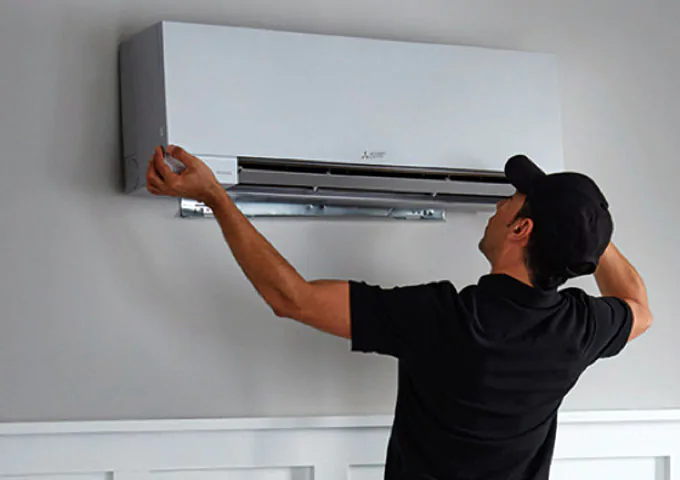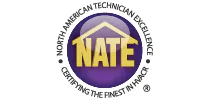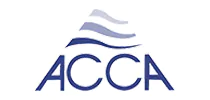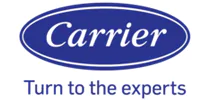It’s a scorcher of a summer day, and you go to crank up the AC for some sweet relief…but nothing happens. The unit won’t kick on at all. Uh oh.
There’s no bigger buzzkill than your air conditioner refusing to turn on, especially when temperatures are soaring. But before you panic, there could be a simple explanation and easy fix.
From tripped circuit breakers to thermostat glitches and condensation issues, there are actually several common reasons your cooling system might fail to power up properly. The key is quickly identifying the culprit so you can get that crisp air flowing again ASAP.
In this guide, we’ll walk through all the typical causes for an AC that won’t turn on, no matter how many times you adjust the thermostat. You’ll learn some basic troubleshooting steps to try resolving the issue yourself.
We’ll also cover when it’s time to wave the white flag and call in professional reinforcements. Sometimes a certified technician is needed to safely diagnose and repair the underlying problem.
So if your home’s AC has quit working and you’re already feeling that sweat start to bead, keep reading! We’ll cover all the need-to-know info for getting your cooling back into action quickly.

Understanding the Basics of Your Air Conditioner
Before we dive into troubleshooting why your AC won’t turn on, let’s cover a quick overview of how these systems actually work. Having a basic grasp of the components and cooling process will help explain some of the potential issues.
At its core, your air conditioner is really just a heat transfer machine. It doesn’t actually “make” cool air, but removes heat and moisture from inside your home and exhausts it outdoors. Here’s generally how it goes:
An indoor unit containing a cold evaporator coil pulls in warm air from your living spaces. As this air passes over the chilled coil, it causes the air’s heat and humidity to condense into water droplets. This cooled, dehumidified air then gets blown back into your home.
Meanwhile, the outdoor condensing unit plays a key role by circulating refrigerant that absorbs heat from inside and releases it outside. A compressor circulates this refrigerant between the indoor and outdoor units in a continuous cycle.
As the refrigerant passes through the indoor evaporator coil, it absorbs heat from the air blowing across it. This causes the refrigerant to warm up and turn into vapor. The vapor then passes back outside to the condenser coil.
In the outdoor condensing unit, a fan blows over the hot refrigerant vapor to remove its heat. This causes the refrigerant to condense back into liquid form before heading back inside to repeat the cycle.
So in simple terms – the indoor evaporator coil absorbs heat and moisture from household air while the outdoor condenser coil releases that captured heat outside. The refrigerant acts as the heat transfer fluid constantly moving between the two units.
With that basic understanding of how ACs work, it’s easier to start pinpointing why yours may not be turning on or running properly. Electrical, mechanical, or airflow issues in any part of this cooling cycle could be the culprit.
Preliminary Checks Before Troubleshooting
Before we get into the nitty-gritty of complex troubleshooting, there are some basic checks you’ll want to run through first. These simple preliminary steps can often reveal an obvious culprit behind why your air conditioner isn’t kicking on. No sense diving into more advanced diagnostics until you’ve confirmed it’s not something quick and easy to resolve!
Ensure the Unit is Properly Plugged In
This one may seem like a no-brainer, but you’d be surprised how many “broken” ACs just had a loose power cord. Double-check that your AC’s power cable is securely plugged into an outlet and not damaged. If it’s connected to an extension cord, ensure that cord is also plugged in properly on both ends and not frayed or overloaded.
Check the Thermostat Settings and Batteries
Your thermostat is the brain that tells your air conditioner when to cycle on and off. If its settings are incorrectly adjusted or its batteries are dead, your AC may not receive the “start cooling” signal. Make sure the thermostat is set to “Cool” mode with the target temperature below the current room temp. Also, change out any dead batteries while you’re at it.
Confirm the Circuit Breaker Hasn’t Tripped
Air conditioners draw a lot of power to run, so a tripped circuit breaker is a common culprit behind units that won’t turn on. Head to your home’s electrical panel and ensure the breaker controlling the AC circuit is fully in the “ON” position. If it’s switched to “OFF” or in the middle, that means it tripped and needs to be reset.
Make Sure the AC Unit’s Power Switch is Turned On
Many air conditioning systems have their own power switch right on the indoor or outdoor unit housing. If this physical switch is turned off, it overrides any thermostat signals telling the AC to run. Locate the switch, usually a basic toggle or dial, and ensure it’s in the “ON” position before proceeding with other troubleshooting.
If you’ve checked all those basic areas and your AC still won’t start up, it’s time to move on to more in-depth diagnostic steps. At least you’ve ruled out some of the simplest potential reasons for its non-operation! With those easy fixes crossed off the list, we can start investigating other possible electrical, mechanical, or airflow issues standing in the way of cool air.
Common Reasons Why Your Air Conditioner Won’t Turn On
If you’ve made it past those basic preliminary checks and your AC still refuses to fire up, it’s time to start digging a little deeper. There are several common culprits that could be preventing your cooling system from turning on properly. Let’s run through some of the biggest ones.
Power Issues
Air conditioners may be all about keeping things cool, but they still need a steady flow of electrical power to operate. Issues with your home’s electrical supply or the AC’s power connections can absolutely prevent the unit from receiving that crucial juice.
Start by checking for blown fuses or tripped breakers in your main electrical panel. A circuit overload from other devices running could have cut power to your AC. If replacing any blown fuses or resetting tripped breakers doesn’t get your unit running, you may have a wiring issue requiring an electrician.
You’ll also want to inspect the disconnect box where your AC’s power cables connect. Loose or corroded wiring connections in this box could be disrupting the electrical flow. Tightening any loose connectors or cleaning off corrosion may resolve power issues.
Thermostat Problems
We rely on our thermostats to accurately sense temperatures and communicate when the air conditioner needs to cycle on. But if that thermostat isn’t working properly, your AC may not receive the right start signal.
Start by changing out any dead thermostat batteries, as that’s a simple fix. You’ll also want to ensure its settings are correct – system mode set to “Cool” with the target temp below room temperature. Check that any programmable schedule isn’t inadvertently telling it to stay off.
If adjusting settings doesn’t help, your thermostat may need to be re-calibrated or replaced if it’s providing inaccurate temperature readings. Wireless models can also experience signal interference preventing communication with your AC.
Condenser Unit Issues
The outdoor condenser unit is a core part of your AC’s heat exhausting process. If this condensing unit experiences any mechanical or airflow issues, it can prevent the whole system from turning on as a safety precaution.
Start by shutting off power to the unit and clearing away any obstructions like leaves, dirt or debris from the condenser fan. Anything blocking that fan’s airflow can cause the compressor to overload and shut off the system. Check that the fan blades spin freely without obstruction.
You’ll also want to inspect the compressor’s electrical connections and capacitors. Loose wiring or a failed capacitor can keep the compressor from powering up properly. While you can replace capacitors yourself, any suspected compressor issues require an HVAC professional’s expertise.
If you’ve checked all those common trouble areas and your AC still won’t turn on, it may be time to call in reinforcements. Continuing DIY diagnostics much further risks causing more damage. An experienced technician can properly assess any larger electrical or mechanical issues using specialized tools and knowledge. Their expert troubleshooting ensures you get that cool air flowing again quickly!
When to Call a Professional
Let’s face it – unless you’re a certified HVAC tech yourself, there’s only so far DIY troubleshooting can realistically take you. At a certain point, continuing to poke around risks causing more harm than good. Knowing when to throw in the towel and call in the cavalry is key.
If you’ve checked all the basic stuff like thermostat settings, breakers, and power connections but your AC is still stubbornly refusing to turn on, it’s probably time to quit while you’re ahead. Pushing much further into complex electrical diagnostics or refrigerant system work without proper training is just asking for trouble.
Anything involving your home’s main electrical panel or hardwired AC power supply is a huge no-no for amateurs. Those are areas where one minor misstep could lead to fires, shocks, or thousands in damage. Leave that kind of work to a qualified, licensed electrician who knows what they’re doing.
The same idea applies to any suspected compressor or refrigerant line issues with your AC system itself. Those components are pressurized and full of hazardous gases that require very specific know-how to service safely. Trying to be a hero and crack into those areas yourself could literally blow up in your face. Not worth it!
Even something seemingly straightforward like a bad thermostat may be over your head if you’re unsure about proper re-calibration methods or wiring. Damaging that control board trying to DIY a fix could leave your system inoperable.
At the end of the day, the risks of injury, property damage, or just making the problem way worse by going rogue aren’t worth the potential money saved. Reputable HVAC companies have the specialized tools, training, and knowledge to quickly diagnose and repair issues the right way. Their expert troubleshooting also helps determine if an aging system simply needs to be replaced versus repaired.
So if you’ve exhausted all the basic homeowner tips and tricks, it’s time to call in the big guns. Swallow that pride and let a pro take over from there. It’s the smartest and safest way to get your cool air flowing again without any nightmares.
Preventive Maintenance Tips
Once you get your AC back up and running, the last thing you want is for this headache to repeat itself anytime soon. Taking a few simple preventative maintenance steps can go a long way in keeping your cooling system humming along reliably for years to come.
One of the most important things is replacing air filters regularly. Most HVAC pros recommend swapping out standard 1-inch filters every 1-3 months. Those filters catch lots of dust and debris that can otherwise build up on your AC’s interior components over time. Built-up gunk on stuff like evaporator coils forces your system to work harder while reducing efficiency.
Speaking of interior components, an annual tune-up from a certified HVAC technician is also money very well spent. They’ll give your entire system a deep clean and thorough inspection to catch any developing issues early before they turn into breakdowns. Little things like tightening electrical connections and lubricating motors can extend equipment life substantially.
For the outdoor condenser unit, keeping the area clean and clear of obstructions is crucial. Anything blocking airflow forces the compressor to work harder while reducing heat transfer ability. Make sure there’s at least a couple feet of clearance in all directions. You can also clean off the fins and clear away any foliage or debris once in a while.
If you have a professional HVAC company you trust, like Christian HVAC, consider an affordable annual maintenance plan. For one flat fee, they’ll provide comprehensive tune-ups and the peace of mind that your system is running at peak performance all year long.
It’s also wise to keep up on any repairs, no matter how minor. What may seem like an easy-to-ignore little issue can often snowball into much bigger (and expensive) problems down the road if neglected. Addressing even small fixes promptly keeps your system in top shape.
A little preventative TLC goes a very long way! Taking these basic maintenance steps ensures you get the maximum possible lifespan out of your AC investment while avoiding frustrating (and costly) shutdowns. Make it a priority and you’ll be chillin’ for years to come.
Stay Cool with Proper AC Maintenance
When your air conditioner craps out in the middle of a heatwave, it’s enough to make you want to move to the Arctic. But before you start pricing out igloo rentals, remember that Christian Heating & Cooling has been the trusted name for keeping locals comfortably chill for over 35 years.
As a locally-owned business dedicated to superior service, we employ some of the most knowledgeable HVAC techs around. They’ve got the skills to quickly identify any AC issue, from electrical goblins to mechanical mayhem, and get that cool air flowing again ASAP.
Our team also knows all the insider tips to help prevent those sweaty breakdowns through proper air conditioning maintenance. A little preventative TLC like professional tune-ups is the key to maximum system lifespan and efficiency.
So if your AC decides to pull a vanishing act this summer, don’t sweat it. Give the crew at Christian HVAC a call at (215) 488-5795 and let us get your chill back on track quickly. We’ll make sure you stay comfortably cool all season long!



